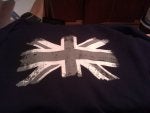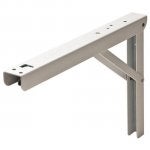Good Evening
Been awhile since I posted been busy started getting some clients and launched a label, but this is about my baby I built yesterday
10 platen portable line table, I built it on a existing table with out damaging the table need to print 100 2 colour long sleeves on Thursday so decided to go from 2 platen to 10.
need to print 100 2 colour long sleeves on Thursday so decided to go from 2 platen to 10.
3 point registration cheap to make, I am making a screen holder/dryer for multi colour jobs and drying screens built it on a old tv trolly so it is mobile
The first image is 2 pieces of wood that keep the whole press firmly on the table without damaging the table unscrew the butterfly bolts and the press is unattached from the table
Been awhile since I posted been busy started getting some clients and launched a label, but this is about my baby I built yesterday
10 platen portable line table, I built it on a existing table with out damaging the table
3 point registration cheap to make, I am making a screen holder/dryer for multi colour jobs and drying screens built it on a old tv trolly so it is mobile
The first image is 2 pieces of wood that keep the whole press firmly on the table without damaging the table unscrew the butterfly bolts and the press is unattached from the table

































